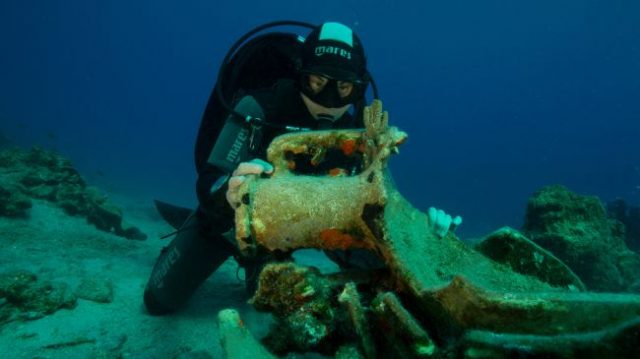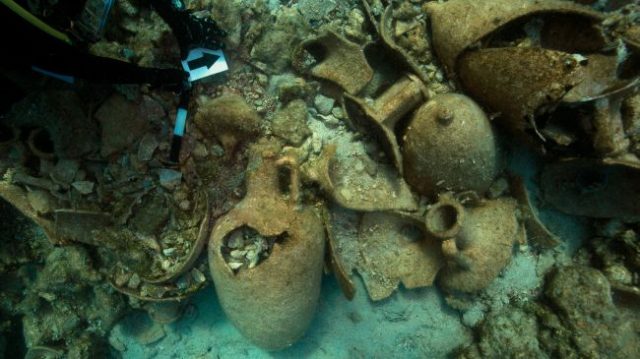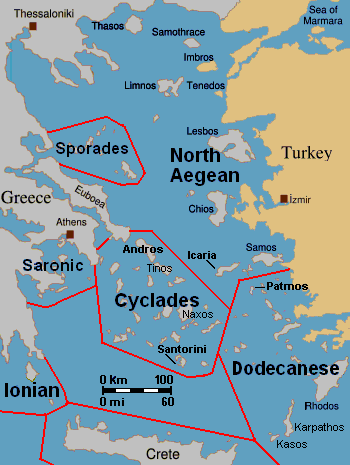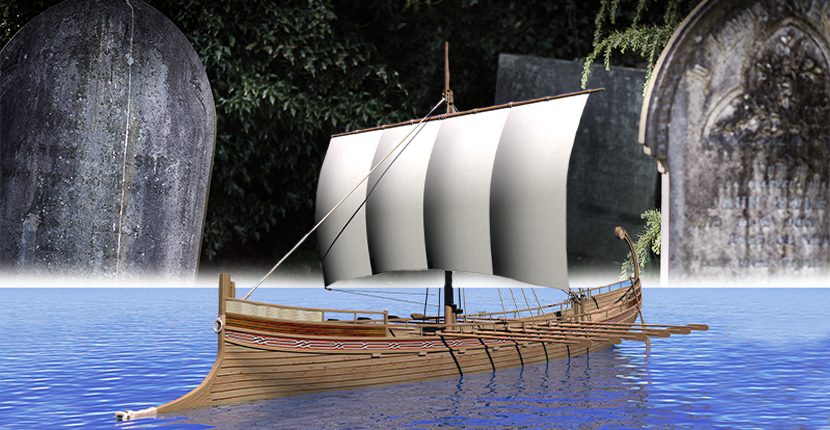The Davey Jones locker of the Mediterranean has been found with the discovery of this shipwreck graveyard. In ancient times, the Aegean Sea was a common trade route linking the Greeks to other ports in the Mediterranean and as far away as Egypt and Spain. Located between Asia Minor and Greece, it is an extension of the Mediterranean Sea peppered with islands that form an Archipelago.
There are seven groups of islands: the Thracian Sea group, the east Aegean group, the Northern Sporades, the Cyclades, the Saronic Islands, the Dodecanese group, and Crete. The island of Levitha is in the Dodecanese region and has an area of about six square miles. The sea around the island is rough with currents that are called the “euripus phenomenon”, a term coined by Aristotle according to Encyclopaedia Britannica.
Because of the fierce currents, the surrounding seabed is covered with over two thousand ancient shipwrecks. Recently, five of these shipwrecks were explored. The underwater excavation performed in June of 2019 was carried out by archaeologist George Koutsouflakis, director of the Department of Underwater Archaeological Sites, Monuments and Research with the Ephorate of Underwater Antiquities, part of the Hellenic Ministry of Culture and Sports.

Fifty- seven group dives, totalling ninety-two hours, were spent exploring the wrecks so far. Exploration will continue in the Aegean islands of Glaros, Mavria and Chinaros as well as further study around Levitha until at least 2021. The most startling discovery was of a granite anchor pole dating to the sixth century B.C. found almost one hundred and fifty feet below the surface weighing almost nine hundred pounds.
Most of the shipwrecks in the area carried amphorae, large containers usually made from ceramic or terra cotta with a narrow neck and handles on either side used to carry goods in transport. Some were plain, with only the maker’s stamp, but others were decorated with intricate designs often from Greek mythology.

Some had flat bottoms while others were pointed to make packing easier. When the pointed jugs were brought from the boat they were set into bronze or ceramic stands. The capacity was usually about six gallons but some able to hold almost ten gallons have been reported and tiny vessels called “amphoriskoi” were used to store perfume.

The stamps on amphorae were usually found near the top of the jug and identified the pottery shop where it was made. They often had expiration dates of the contents and were sometimes used to ensure quality according to Ancient History Encyclopedia. The most common goods carried were wine and olive oil, two of the major staples of ancient life, but fish sauce, preserved fruits, olives, honey, and dry food such as grains were carried as well. Amphorae were also used as funeral containers for ashes or foodstuffs buried in graves to take to the afterlife.

Greek Reporter tells us most of the shipwrecks were from the first and second centuries B.C. and A.D. when the Ptolemaic and Hellenic Antigonid dynasties governed the Aegean’s trade routes. They carried goods from the islands of Kos and Rhodes and the cities of Knidos in present day Turkey, Carthage in modern day Tunisia in North Africa, and Phoenicia in today’s Lebanon.
https://youtu.be/30mwhnZ2XeI
The water trade routes were critical to the economy of the Aegean Islands. For those who like to study the trade routes, Lear Walter Scheidel and Elijah Meeks, along with Stanford University historians and IT specialists, have created an online program that tells us the distance and costs to ship goods in the Roman Empire which roughly coincides with the end of the Hellenic dynasties.
ORBIS, as it is called, explores not only water transportation, but the other options for traveling and transporting goods. ORBIS is the Stanford Geospatial Network Model of the Roman World and allows users to calculate transportation based on what conditions were two thousand years ago with the ability to choose a route, speed, and method of travel. Weather, topography, sea conditions, and river currents are as closely matched to the actual conditions of the time as possible.
Related Article: World’s Oldest Intact Shipwreck Found – 2,400-yr-old ‘Ship of Odysseus’
According to ORBIS, the speed option also provides rates such as a “horse with rider on routine travel”, a “rapid military march,” in a “camel caravan” and on an “ox cart”. Sea or river routes can be chosen with river boats and sailing ships and adjusted to find the most economical and fastest passages.
